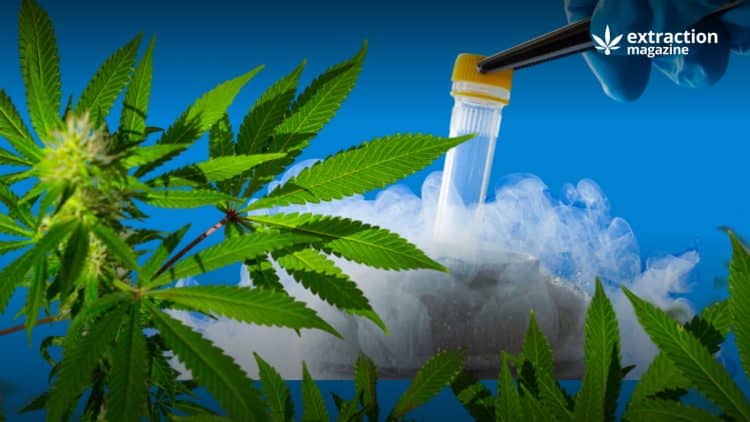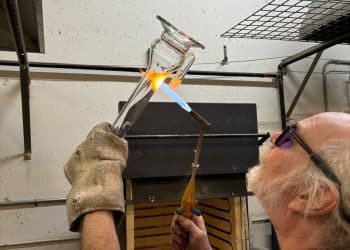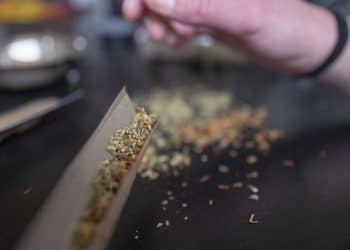Using cryopreservation for breeding cannabis plants may be the future for preserving valuable genetics.
Cryopreservation is an innovative method that involves the storage of living materials at a temperature below -130°C. Unlike conventional field and in vitro germplasm conservation, cryopreservation is an affordable and space-saving approach that requires minimal maintenance.
This method further supports the exchange of genetic materials like pollen, shoots, and buds, enabling breeding programs to benefit from long-term storage, and also facilitates the safe exchange of these genotypes across national and international borders. In this way, cryopreservation helps to protect and share valuable genetic resources, contributing to the progression and growth of cannabis as a commercial crop.
Cannabis Cryopreservation Research
Research on cannabis cryopreservation is not a new concept, but the advance of the cannabis industry is fueling new studies. Most recently, a study on the cryopreservation of 13 different cannabis sativa cultivars was conducted using in vitro nodal explants. Nodes were cultured and frozen using a protocol that was successful across 13 genotypes. After being frozen in liquid nitrogen, the nodes were re-warmed using an unloading solution at 40°C, cultured on basal Murashige and Skoog (MS) culture medium in the dark for five days, and then transferred to standard culture conditions. Rates of tissue survival (43-80%) and regrowth (26-66%) varied consistently, but plants from cryopreserved samples were similar to control plants. The results of the study conclude the production of a successful cryopreservation system for long-term germplasm preservation.
New research like this is building on previous studies supporting cannabis cryopreservation protocols. A similar study examining the cryopreservation of cannabis sativa shoot tips claimed to be “the first report on protocol development for the cryopreservation of organized tissues of C. sativa L. for germplasm conservation”. The study evaluated three protocols for conserving shoot tips in liquid nitrogen, extracted from in vitro-grown shoots of three cultivars. Before vitrification, shoot tips were pretreated on dimethyl sulfoxide (DMSO) agar plates and subsequently vitrified in liquid nitrogen while exposed to plant vitrification solution #2 (PVS2). While regrowth was not significantly affected by 15 and 20 min PVS2 exposure, regrowth significantly declined for all three cultivars after 20 min of exposure. It was these findings that discovered the most ideal duration for cryopreservation of these varieties is between 15 to 20 minutes of exposure to PVS2.
Another study focused on the cryopreservation of axillary cannabis sativa buds using a v-cryoplate method with the goal of developing a successful protocol for cryopreserving axillary buds. In this study, stem segments with mature axillary buds collected from indoor-grown plants underwent surface sterilization and were either pre cultured for 72 hours or non-precultured. All mature axillary buds were pre cultured for an additional 48 hours prior to cryopreservation. Fully mature mother plants and regrown cryopreserved plants were analyzed for tetrahydrocannabinol (THC) and cannabidiol (CBD) content. A gas chromatography-flame ionization detector (GC/FID) was used for the analysis. Following the two-step preculture, the survival rates of cultivars were between 45% and 47% with regrowth rates between 42% and 44%. The re-grown plants appeared normal, and no major issues were noticed after cryopreservation. At maturity, the mother plants and re-grown cryopreserved plants exhibited similar cannabinoid content, which is beneficial when trying to replicate cannabinoid yields in a specific genotype.
Results from these three research studies demonstrate the success of cryopreservation techniques being used for breeding cannabis plants. Cryopreservation ensures long-term germplasm preservation and provides opportunities for breeding programs to thrive. Studies like these also highlight how cryopreservation protocols can be tailored to suit specific parts of the plant. These findings demonstrate the immense potential of cryopreservation as a tool for the cannabis industry, enabling breeders to preserve and exchange genetic resources securely, paving the way for future advancements in cannabis genetics.












